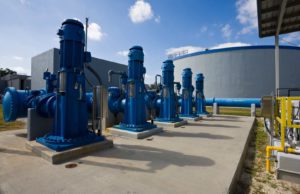I was talking to a customer the other day who was lamenting about how difficult it is to meet goals related to energy and cost savings when dealing with an aging water infrastructure. It dawned on me that this is one of those cases where there actually can be a simple solution…so simple that it often gets overlooked.
In this case, I’m talking about the pump. Despite the increasing focus on asset management, energy management, and sustainability, most pump station design hasn’t changed much over the years. Couple that with misconceptions related to implementing improvements (such as “I’ll sacrifice reliability” or “that’s only cost-effective for larger pumps”), and there’s no wonder that more strides aren’t being taken. But that’s a shame.
The fact is, pumps represent one of the largest asset expenditures for a utility, but also offer the greatest potential for savings. I wrote an article on this topic for the September/October issue of World Water, called “Intelligent technologies optimize utility pumping” (pages 22-23), but I’ll share a few highlights here.
Smart Water
If you want to play in the “smart water” arena, you have to understand the new technology that’s available and also apply sound business practices. There are so many devices that now feature embedded intelligence and a high level of integrated functionality, but the fundamentals of keen awareness and planning are still crucial to know how to apply this technology to really work smarter.
Smart solutions exist today, ranging from single-pump to enterprise, and many build upon one another for easy scalability while you further develop your infrastructure. In some ways, you can “future-proof” your utility since today’s devices include intelligence and functionality for future applications. Current technologies now have advanced capabilities to deliver benefits like asset protection, cost savings, performance benchmarking, energy savings and increased safety, such as:
- Sensors
- Intelligent motor protection
- Variable frequency drives
- Advanced process controllers
Intelligent Pumping
In addition, intelligent pump applications can take operations to a whole new level by capturing and analyzing large amounts of data. These applications often communicate across multiple systems within a utility and enable the convergence of operational and business systems (OT/IT), which empowers operations, maintenance and management to make more intelligent decisions. You’ll have to read the article for 6 examples of these types of applications (pages 22-23).
Roadmap to Sustainability
Those that have already implemented intelligent pumping are ahead of the game, but it’s not too late to join in. The smartest water utilities have figured out the power of the pump – transforming this costly and energy-intensive process can put you on the roadmap to sustainability.



